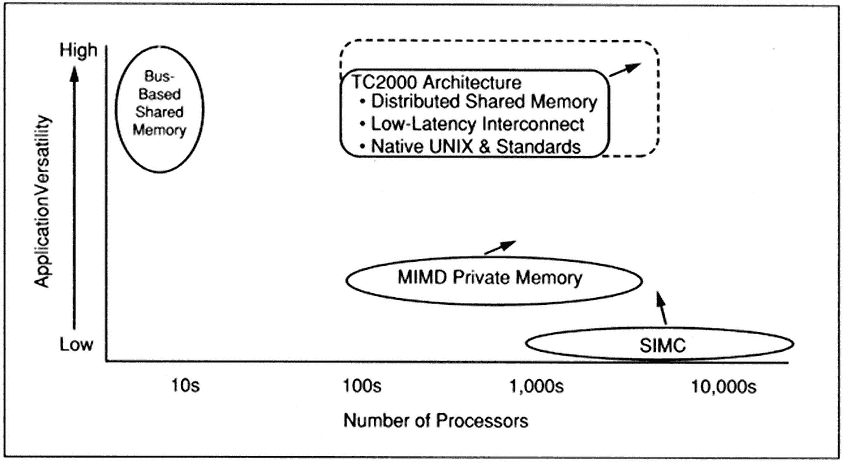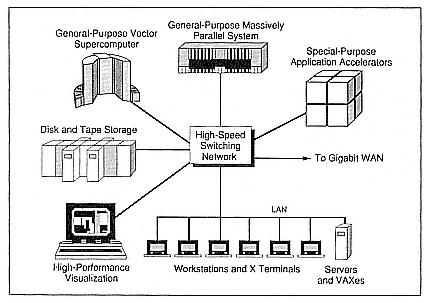Challenges and Directions for the Future
The challenge facing the vendors of massively parallel processors in the 1990s is to develop systems that provide high levels of performance without sacrificing programmer productivity. When comparing the next generation of parallel systems, it is the interconnect and memory ![]() architecture
architecture ![]() and the software that will distinguish one system from another. All of these vendors will have access to the same microprocessors, the same semiconductor technology, the same memory chips, and comparable packaging technologies. The ability to build scalable, massively parallel systems that are readily programmable will determine the successful systems in the future.
and the software that will distinguish one system from another. All of these vendors will have access to the same microprocessors, the same semiconductor technology, the same memory chips, and comparable packaging technologies. The ability to build scalable, massively parallel systems that are readily programmable will determine the successful systems in the future.
Most vendors have realized this and are working to enhance their products accordingly, as shown in Figure 6. The traditional bus-based
Figure 6.
Directions in ![]() architecture
architecture ![]() .
.
and crossbar ![]() architecture
architecture ![]() systems have always held the lead in application versatility and programmer productivity but do not scale to massively parallel levels. Many of these vendors, such as Cray, have announced plans to develop systems that scale beyond their current tens of processors. At the same time, vendors of data-parallel and private-memory-MIMD systems are working to make their systems more versatile by improving interconnect latency, adding global routing or simulated shared memory, and adding more UNIX facilities to their node kernels. The direction in which all of this development is moving is toward a massively parallel UNIX system with low-latency distributed shared memory.
systems have always held the lead in application versatility and programmer productivity but do not scale to massively parallel levels. Many of these vendors, such as Cray, have announced plans to develop systems that scale beyond their current tens of processors. At the same time, vendors of data-parallel and private-memory-MIMD systems are working to make their systems more versatile by improving interconnect latency, adding global routing or simulated shared memory, and adding more UNIX facilities to their node kernels. The direction in which all of this development is moving is toward a massively parallel UNIX system with low-latency distributed shared memory.
As in previous transitions in the computer industry, the older technology will not disappear but will continue to coexist with the new technology. In particular, massively parallel systems will coexist with conventional supercomputers, as illustrated in Figure 7. In this "model supercomputer center," a variety of resources are interconnected via a high-speed network or switch and are available to users. The traditional vector supercomputer will provide compute services for those problems that are vectorizable and primarily serial and will continue to run some older codes. The special-purpose application accelerators provide very high performance on select problems that are executed with sufficient frequency to justify the development cost of the application and the cost of the hardware. The general-purpose parallel system will off-load the vector supercomputer of nonvector codes and will provide a production environment for most new parallel applications. It will also serve as a testbed for parallel algorithm research and development.
Figure 7.
Model supercomputer center.

